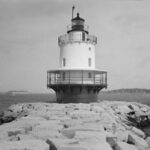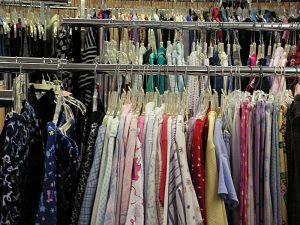Cuba’s Fight for Independence (1898 Span-Amer War)
- • José Martí – leader of revolution for Cuba’s independence from Spain
- • Tomás Estrada Palma – new leader/president of Cuba in 1902
- • US decided to fight for Cuba’s independence because:
- 1) US had millions of $ invested in businesses in Cuba
- 2) many US citizens lived in Cuba
- 3) US traded goods with Cuba
- • The USA declared war on Spain after one of America’s warships (Maine) exploded and sank on February 15
- • USA won the war and the Treaty of Paris was signed in December of 1898
- • When Theodore Roosevelt became president of the US in 1901, he abandoned this treaty, giving Cuba formal independence from the US on May 20, 1902 as the Republic of Cuba.
- • Teller Amendment (1898) – conditions for US military in Cuba; could not annex Cuba; Colorado’s sugar beet crops protected
- • Platt Amendment (1901) – conditions for removal of US troops; USA had right to intervene in Cuban affairs; gave USA access to Guántanamo Naval Base
United States Occupation (1899-1902)
- • 3 basic goals of US Occupation
- 1) Turn Cuba into a self-governing colony to secure liberal economic policies and political stability
- 2) Repair the destruction from war, provide services to sustain US occupation, and promote economic recovery
- 3) Absorb Cuba into the US’s economic sphere of influence
- • Theodore Roosevelt established his Big Stick Diplomacy
Impacts of US Involvement
- • Political
- o Cuba was a “protectorate” of the US
- o During the US’s 2nd occupation, a new system of institutionalized corruption was put into place
- o Charles Magoon put in charge of Cuba by US during 2nd occupation – policy of “whitening”
- • Economic
- o Little Cuban Industrialization
- o Sugar companies monopolized the railroads and operated them for only their benefit
- o US companies invested $200 million in Cuba by 1913, mainly in sugar
- o Cuba’s single crop economy – sugar boom and American investment created an economy almost wholly dependent upon sugar exports
- • Social
- o Transformed Cuban society by removing the final obstacle to the development of the latifundio in Cuba (2 processes)
- o The expansion of the latifundio impoverished the rural masses of the island (colonos & rural workers)
- o All types of workers organized trade unions and pressed for social justice
- o Afro-Cuban mambises like José Isabel Herrera complained that US investors, Spanish immigrants, and loyalist elites “took over the businesses, factories, and public jobs that we had just brought to independence”
Tomás Estrada Palma
- • Became the first president of independent Cuba
- • Implemented US-sponsored policies and built up support from the local elites
- o Angered lower-class Cubans
- • February 16, 1903: Palma signed the Cuban-American Treaty, agreeing to lease the Guantanamo Bay area to the United States
- • Palma’s policies provided improvements in education, communications and public health
José Miguel Gómez
- • 2nd president of Cuba, served from 1909-1913
- • In favor of adopting the Platt Amendment and tried to avoid US military intervention
- • During his presidency, Gómez reorganized the Cuban army, increased the national marine, improved the ports roads, and bridges, constructed railways, improved the condition of the workingmen, and expanded public schools.
Effect of WWI on Cuba
- • Fighting in Europe disrupted sugar production on the continent and caused large price increases
- • Cuban production rose in 1916, causing a severe labor shortage and laborers had to be imported from other Caribbean islands
- • Accelerated the trend toward the concentration of the industry in US hands
- • Post-WWI: sugar prices largely increased, the “Dance of the Millions” was an upward spiral of the price of sugar from 9.125 cents/lb to 22.5 cents/lb in 1920
- o Prices soon collapsed worldwide to 3.75 cents/lb
- • The sudden rise and fall of sugar prices caused economic chaos in Cuba.
Organized Opposition to Machado
Supporting Machado
ABC secret society
The Cuban Army
Student Groups
Business Interests
Carlos Mendieta with the Nationalist Union
Liberal Party, Conservative Party, Popular Party
Labor Unions usually led by immigrants
Manufacturers
Communist Party
- • The loans that sugar producers and processors had taken to expand were based on high prices of sugar; banks began to call in the loans and close down.
- • The US rose their tariff on sugar on penny that further hurt the economy.
- • In late 1920, the US military intervened and General Enoch Crowder ruled Cuba from the battleship Minnesota until 1923, which revived Cuban nationalism.
The administration of Alfredo Zayas y Alonso (1921-1924)
- • Worked towards women’s suffrage
- • Worked to add Isle of Pines to the Republic of Cuba
- • corrupt administration
Politically Active Students
- • WWI and the Great Depression limited adequate jobs for graduates
- • In 1922, dissatisfaction turned into political organization
- o University of Havana formed Federacion Estudiantil Universitaria (FEU)
- o Academic and administrative reforms attained
The administration of Gerardo Machado y Morales (1925-1933)
- • Won the election of 1924
- o did so by taking advantage of growing nationalist sentiment and also by appealing for women’s support with promises of enfranchisement
- • Initial years
- o public works
- o system of control for sugar production designed to protect small-medium sized producers against large price declines
- o slightly improved some working conditions
- § female hiring quotes
- § breaks for working nursing mothers
- o neglected his promise of suffrage for women
- o unparalleled popularity and virtually no opposition
- • 1929-1933
- o increase in political assassinations
- § Secret police- Porra
- o vulnerable weakening economy
- § unable to sustain prices -> mills closing -> workers lose jobs -> increasing opposition
- § Machado responds to opposition with tight censorship and terror tactics from the secret police
Revolution of 1933
- • revolutionary junta formed led by Batista and the army sergeants allied with the Student Directory
Batista
- • Fulgencio Batista y Zaldivar, the sergeant stenographer mulatto son of a sugar worker, dominated Cuban politics for the next decade
- • ruled the island through puppet presidents from 1934-1940 and was elected President in 1940
1940-1944 Batista’s Presidency
- • Batista defeats Grau; Constitutional leader
- • mild populist reform program
- • Land redistribution, distance from US, encouraged labor unions
- • Financed w/ higher sugar prices – International Sugar Council – 29% U.S. market
- • 1940 – new constitution – advanced
- • Protects labor, min. wage, equal women’s rights, public education
- • 1944 Grau elected – Batista retires in Daytona, FL
1944-1952 Auténtico Interlude
- • Batista – 1948 Cuban senator
- • 1948 – Socarrás succeeds Grau
- • both corrupt- political gangs + spoils systems
- • WWII economic boom – US purchase entire sugar harvest
- • 4 cents/lb -Korean War – 5 cents/lb
- • Then global market glutted w/ sugar = econ. Depression
- • Corruption masked by sugar $ and populist social programs
1952-1959 Batista’s Dictatorship
- • overthrows Socarrás in coup before elections- citizens don’t protest
- • Corruption remains; suspends constitutional guarantees of 1940; consolidates power w/ military
- • US supplies weapons to Batista gov’t = more anti-Batista sentiment
- • Failed to advance economic welfare of people: US monopolies and monoculture
- • 1956 – Refuses to hold elections. Killed 200,000 and turned Cuba into police state in 7 years.
- • Censorship of media to end student riots and anti-Batista demonstrations.
Economy and Society under Batista
- • US owned 50% of public railways; 90% of phone & power industries.
- • US supplies 2/3 of imports, no competition
- • no landed peasantry b/c foreign owned latifundios
- • sugar monoculture; 8 month “tiempo muerto” – plight of workers
- • Sold Cuba to US; felt by many workers/students
- • Let US corporations exploit Cuba’s resources: sugar, cheap labor, tourism, hotels, prostitution, drugs, alcohol, gambling & Casinos, while the people remained poor.
- • Havana “the Latin Las Vegas” – profitable for US businesses and organized crime. gangsters, Mafia = more corruption
- • Huge socio-economic gap; Poor standard of living – cities > rural
- • High illiteracy rates – 50%
- • Low wages; Poor education & health care systems
- • Solares – housing projects like US but worse
- • Repression (1956 – 58) – a daily event
- • Fear of apprehension by Batista’s military police -Disappearances, tortures
- • Curfew – streets closed at night
Castro and the 1950’s
- • 1953 – July 26 Revolution at Moncada – failure
- • Castro writes “History Will Absolve Me” in prison
- • Batista – amnesty to prisoners; Castro flees to Mexico
- • 1956 – 26th of July Movement but uprising failed; yet gained support for revolution
- • Castro and Che hide in Sierra Maestra and use guerilla warfare-Batista responds w/ counterterror = more loss of support
- • 1958 – Batista holds election to placate opponents; voters abstain + no US support = exile Dominican Rep.




